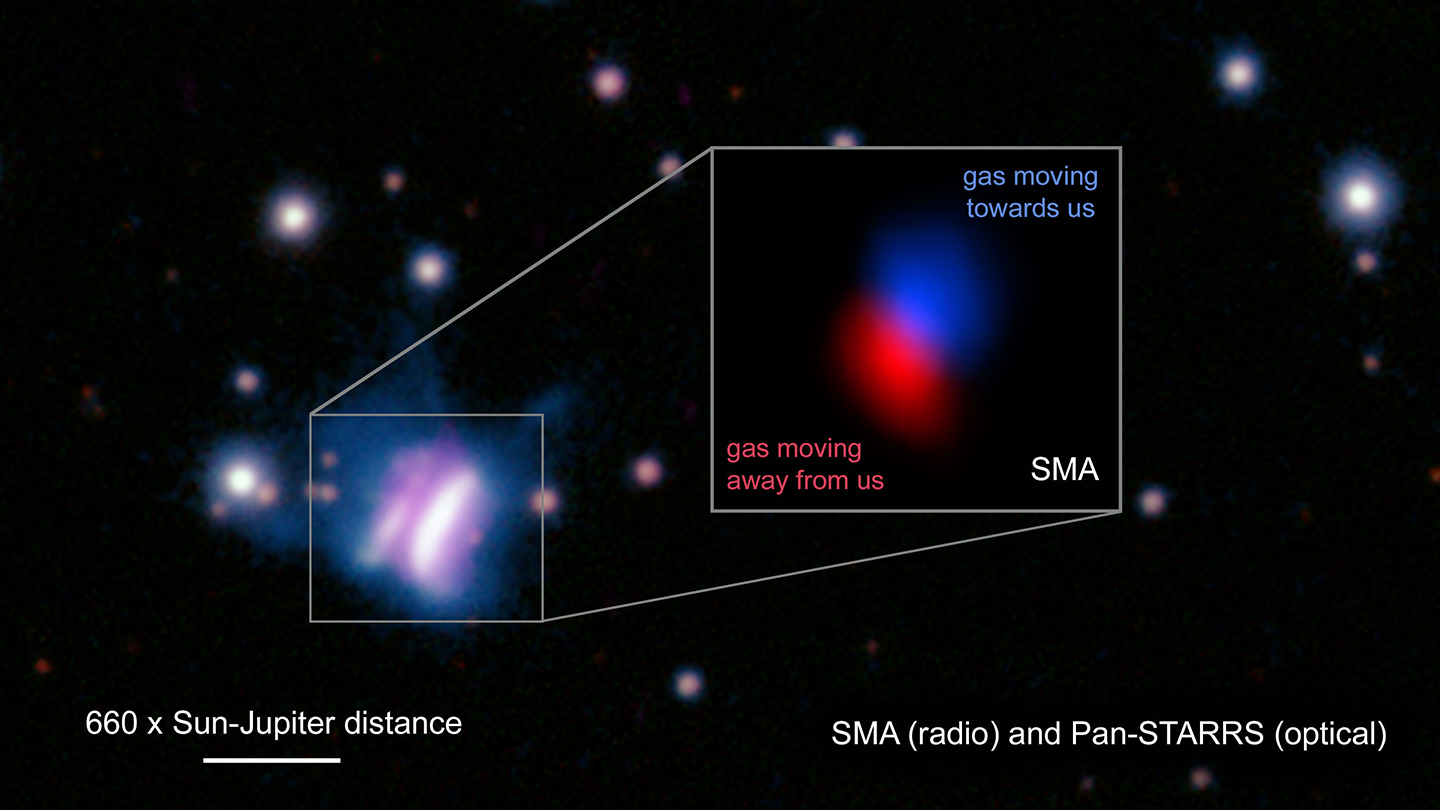Image List
-

Pan-STARRS and SMA image: The center of this composite image shows IRAS 23077, likely the largest planet-forming disk ever seen, which looks like a giant cosmic butterfly. Data from the Submillimeter Array (SMA) at radio wavelengths is shown in pink, and data from Pan-STARRS at optical wavelengths is shown as a color image. Most of the nearby stars appear as white or red. The star in the center of IRAS 23077 is not visible because its light is blocked by the surrounding disk, which is viewed from the side. The blue PanSTARRS data for IRAS 23077 shows the smallest dust grains, with sizes of only a few micrometers. These dust grains are elevated into the uppermost layers of IRAS 23077's disk and appear as two bright lobes, similar in shape to the wings of a butterfly. The two faint filaments in IRAS 23077's northern region could be remnants from IRAS 23077's formation. The pink SMA data shows larger dust grains, with sizes of about one millimeter. These larger dust grains are coincident with the midplane of the planet-forming disk, where dust grains settle and grow to larger sizes and eventually form planets.
Credit: Radio: SAO/ASIAA/SMA/K. Monsch et al; Optical: Pan-STARRS -

Labeled Pan-STARRS and SMA image with SMA image inset: The inset for this image shows compelling evidence that IRAS 23077 contains a planet-forming disk. Along with dust grains, the SMA can also observe the cold carbon monoxide gas that comprises the bulk of a planet-forming disk. By measuring its velocity structure and dividing this into "blue-shifted" and "red-shifted" components, showing material moving towards us and away from us respectively, the team showed that the gas is rotating around the central star, as expected for a planet-forming disk. The line in the bottom left shows the diameter of the disk, equivalent to 660 times the distance between the Sun and Jupiter.
Credit: SAO/ASIAA/SMA/K. Monsch et al; Optical: Pan-STARRS -

Unlabeled Pan-STARRS and SMA image with SMA image inset: The inset for this image shows compelling evidence that IRAS 23077 contains a planet-forming disk. Along with dust grains, the SMA can also observe the cold carbon monoxide gas that comprises the bulk of a planet-forming disk. By measuring its velocity structure and dividing this into "blue-shifted" and "red-shifted" components showing material moving towards us and away from us respectively, the team showed that the gas is rotating around the central star, as expected for a planet-forming disk.
Credit: SAO/ASIAA/SMA/K. Monsch et al; Optical: Pan-STARRS